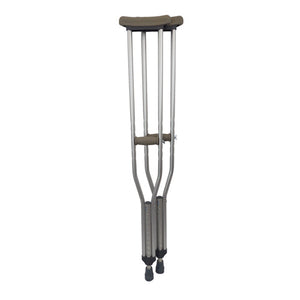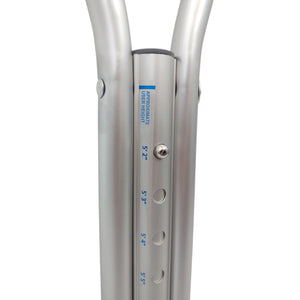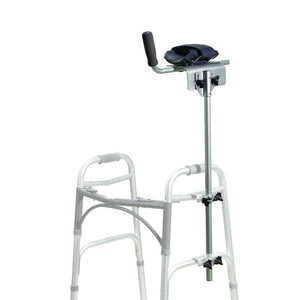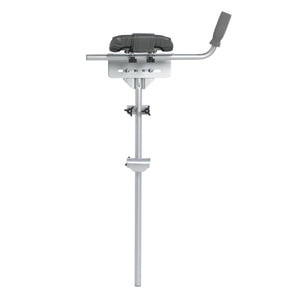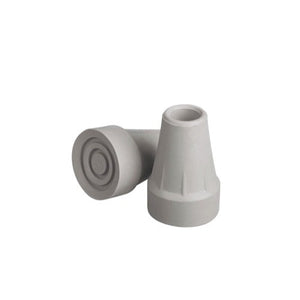Learning how to walk with one crutch after an injury is crucial for safe mobility. This guide offers step-by-step walking techniques with one crutch, balancing tips, and product recommendations to ensure smooth recovery and confidence on the go.
Why Learn to Walk with Just One Crutch?
Whether you're transitioning from using two crutches or starting light support post-injury or surgery, walking with one crutch can improve independence, balance, and muscle strength. Using one crutch correctly requires specific positioning, coordination, and attention to body mechanics. Done improperly, it could lead to discomfort or further injury.
That's why understanding the correct walking techniques with one crutch is essential for mobility, especially when recovering from a leg, foot, or hip injury.
Step 1: Choose the Right Side for the Crutch
A common misconception is that the crutch should go on the injured side—but in reality, you should use the crutch on the opposite side of the injury.
Example:
If your right leg is injured, hold the crutch in your left hand. This method allows your uninjured leg to bear more weight and helps distribute balance properly across your body.
This foundational principle is key to how to balance using one crutch and reduces the strain on your injured limb while keeping your gait natural.
Step 2: Learn the Basic Gait Technique
Once you have the crutch on the correct side:
- Move the crutch forward at the same time as your injured leg.
- Step through with your uninjured leg, allowing it to carry most of the body’s weight.
- Keep the elbow slightly bent (about 15–20°) to absorb shock.
- Walk slowly, keeping your head up and posture upright to avoid leaning.
This is the most basic, safe form of walking with one crutch and should be practiced on flat surfaces until you feel steady.
Step 3: Practice Turning and Stopping Safely
Turning requires careful coordination:
- Pivot on your strong leg while keeping the crutch in place.
- Use small steps to rotate your body gradually.
- Always face forward—avoid twisting your spine or hips abruptly.
When stopping:
- Plant your uninjured leg firmly.
- Place the crutch beside you for support.
- Let your injured leg rest slightly forward to relieve pressure.
These tips are emphasized in the Moovkart guide to crutch walking, where injury mobility safety is prioritized.
Step 4: Navigate Stairs with One Crutch
Stairs can be intimidating, but here’s a simple technique that works:
- Going up: Step up with the uninjured leg first, then bring the crutch and injured leg together.
- Going down: Place the crutch first, then step down with the injured leg, followed by the uninjured one.
Use railings wherever possible. If balance is uncertain, ask for assistance—safety comes first.
Step 5: Choose the Right Crutch and Accessories
To make walking smoother and more comfortable, always opt for:
- An adjustable one crutch for adults, tailored to your height.
- Non-slip rubber tips to prevent slipping.
- Comfortable ergonomic handgrips and underarm padding if needed.
You can buy a single crutch online at Moovkart, where curated mobility aids cater to every stage of injury recovery. Lightweight and durable options with adjustable height make it easier for users to maintain posture and reduce fatigue.
Expert Tips for Better Balance and Comfort
- Engage your core muscles: They stabilize your frame as you walk.
- Keep your gaze forward, not downward, to maintain alignment.
- Rest when needed—overexertion can lead to injury or delayed healing.
- Use an ice pack or elevation if swelling occurs after walking for extended periods.
- Wear supportive footwear to improve stability on the uninjured leg.
These Moovkart injury mobility tips are especially helpful for people recovering from leg or ankle surgery, helping ensure proper progress through rehabilitation.
Common Mistakes to Avoid
- Placing the crutch too far ahead—this can throw off your center of gravity.
- Using the wrong side—remember: opposite side of the injury.
- Hunching shoulders or leaning heavily on the crutch.
- Ignoring pain signals while walking—always consult a medical professional if discomfort increases.
When Should You Transition to One Crutch?
- After your physician or physical therapist clears you to reduce support.
- When you can bear 50–75% weight on the injured leg.
- If you can walk short distances without discomfort or limping.
- When you're ready to improve balance and core control independently.
If you're unsure about timing, the Moovkart walking recovery tips section in each blog post provides guidance based on recovery milestones and rehabilitation timelines.
Conclusion
Learning how to walk with one crutch is a valuable step toward full mobility and independence. With correct techniques, quality equipment, and the right posture, you can regain confidence in your stride. Whether recovering from a fracture, sprain, or surgery, one crutch walking helps reintroduce stability at your own pace.
At Moovkart, we make your transition smoother. From expert guidance to easy-to-use products, we're with you every step of the way.
Explore our crutch collection now and take your first confident step today!


